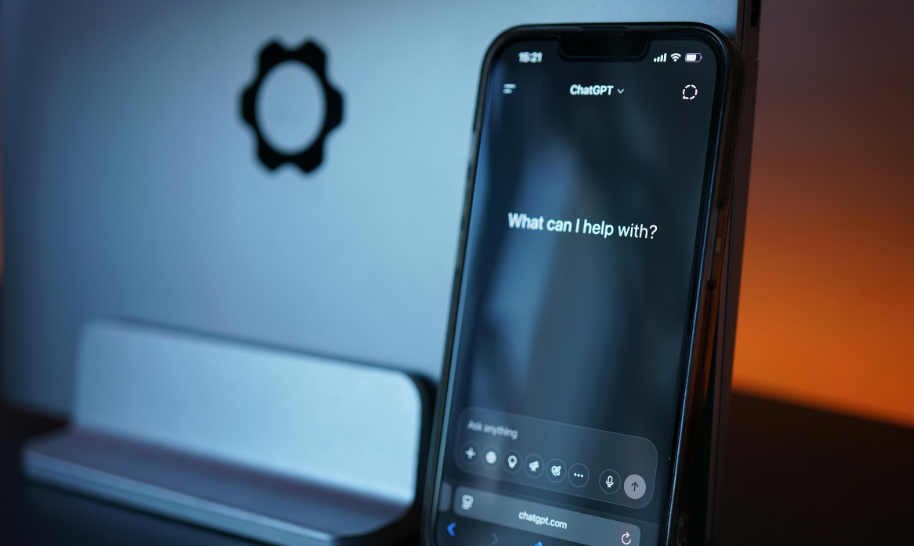Imagine having a tireless sales rep who’s always ready to chat, a market analyst who gives you insights the moment you need them, or a project manager who keeps your team on track and takes care of the repetitive tasks. This isn't science fiction—this is the power of AI chatbots today.
In a fast-paced world of technological breakthroughs, AI chatbots have transformed how we connect with customers and manage our work. These intelligent virtual assistants are reshaping business interactions and making task management smoother, enhancing efficiency and responsiveness like never before.
But what exactly are AI chatbots, and how are they influencing our daily lives and work? In this guide, we’ll explore what makes these digital helpers tick, delve into their capabilities, look at their wide-ranging applications, and glimpse into the exciting future of this game-changing technology.
What are AI Chatbots?
AI chatbot is a program or script that simulates human-like conversations through text or speech interfaces. These bots leverage advanced algorithms like artificial intelligence (AI), machine learning (ML), natural language understanding (NLU), and natural language processing (NLP) to understand, interpret, and respond to user queries.
Salesforce says 83% of customers want brands to respond right away — chatbots are great for that. These intelligent bots can do it all—answer questions, book reservations, give recommendations, and even help with sales.
You'll find them everywhere, from websites to messaging apps, like OpenAI’s ChatGPT, Microsoft’s Copilot, and Google’s Gemini. Their mission? To make your life easier by providing quick, helpful responses tailored to your needs.
Difference between AI Chatbots and Traditional Chatbots
Traditional chatbots follow set rules and can be pretty rigid. AI chatbots, on the other hand, understand what you’re saying and the context behind it, making them much better at giving thoughtful, personalized answers.
How AI Chatbots Work
You’ve probably chatted with an AI bot before, but ever wondered how it actually works? How does your message turn into a smart reply from a robot? Simply put, AI chatbots use AI, NLP, and ML to understand and respond to what you type or say.
Core Technologies
Natural Language Processing
Chatbots use NLP to figure out what you mean, even if you make typos or use slang. NLP, a part of AI, helps computers understand and respond to human language in a natural way. It breaks down your message into understandable parts, like words and phrases, and analyzes them to give a relevant reply. Essentially, NLP is what makes chatbots smart enough to understand and interact with us effectively.
Machine Learning
Chatbots use ML to get smarter over time, learning from interactions to understand and respond better. Like NLP, ML is a part of AI, but it focuses on helping chatbots learn from data to make decisions and predictions. This means chatbots can pick up on user sentiment, recognize patterns, and personalize their replies based on what they’ve learned, making their interactions more natural and effective.
Deep Learning (DL)
DL, a subset of machine learning, uses deep neural networks to learn complex patterns from data. It needs a lot of data and powerful hardware but can be less transparent because of its complex structure. Think of DL as a brain-like part of ML that improves on its own, making accurate predictions without needing human help.
The Inner Workings of AI Chatbots

Let’s dive into what really happens behind the scenes when you interact with an AI chatbot:
-
User’s Input: The users type their questions or messages into the AI chatbot.
-
Input Comprehension: The AI chatbot reads what you’ve typed using NLP. This helps them figure out not just what you said but what you really mean, taking into account grammar, context, and what you want to know.
-
Intent Identification: After grasping your question, the AI chatbot tries to understand what you’re after. Is it info you need, a problem to solve, or something else?
-
Reply Formulation: Once the AI bot knows what you want, it puts together a response using the info it has. It’s not just a generic answer—it’s made to fit what you asked for.
-
User Feedback: An interesting aspect of AI chatbots is they can learn as they go. Every time they interact with users, they pick up new tricks. By seeing what works and what doesn’t, they get better at knowing the right things to say.
Types of AI Chatbots
#1. Menu- or Button-based Chatbots
These are the simplest types of chatbots. You simply click on buttons to choose what you need, and the chatbot guides you along, offering more options until you find what you're looking for. They’re super easy to use and great for simple questions, but if you need something more complex, they might not hit the mark.
#2. Rule-based Chatbots
These chatbots operate on a set of predefined rules and patterns. You click on categories you’re interested in to get answers or info. These bots are great for simple tasks like answering FAQs, but they’re not great at handling surprises since they stick to their programmed rules.
#3. Keyword Recognition-based Chatbots
These chatbots look for certain words or phrases from what you type to figure out what to say. They're better than basic rule-based bots but not as advanced as AI. They're flexible and can handle more types of questions by finding important words. However, if you don't use the right words or ask something tricky, they might get confused.
#4. AI-powered Chatbots
AI-based bots use advanced technologies like AI, NLP, and ML to understand what you're saying when you chat with them. They learn from your interactions, getting better at knowing what to say over time. They get smarter with use and offer apt responses; however, they need lots of data and training initially, which takes time and resources.
#5. Voice Chatbots
These voice-enabled bots use speech-to-text and text-to-speech tech, along with AI and NLU, to understand what you say. They’re handy because you can ask questions without typing a thing. The bots chat with you using spoken language, making things easy and accessible. They offer a natural user experience, but they may struggle with accents, slang, or noise, limiting their effectiveness in diverse environments.
#6. Hybrid Chatbots
Hybrid bots are a blend of AI and rule-based chatbot tech, giving you top-notch help. They can handle both simple and complex questions, using smart AI and dependable rules to assist you effectively. However, making and keeping hybrid systems working well can be tough. They need to balance automatic answers and human touch without depending too much on one or the other.
#7. Generative AI Chatbots
New-gen chatbots with generative AI are super smart—they understand language, adapt to how you chat, and even show empathy. They come up with responses on the spot, making convos more interesting. They give tailored responses to complex queries, offering personalized interaction, but their open-ended replies may lead to irrelevant or unexpected answers. You can explore our Generative AI services for expert guidance on integrating Gen AI into your business.
Applications of AI Chatbots
AI chatbots are being used in all sorts of places, changing how we do business and go about our daily lives. You might run into one while shopping online or get help from a chatbot when you’re looking for medical advice or mental health support.
Gartner predicts that traditional search engine volume will drop by 25% by 2026 due to the usage of AI chatbots and other virtual agents. They’re becoming a part of everything we do. Some notable use cases include:
Customer Service
AI chatbots are great for customer support. They’re available around the clock, giving quick answers and helping with issues like booking appointments or checking transactions.
For example, Mastercard uses a bot to help customers check their accounts anytime, and restaurants use it to place online orders.
Chatbots handle a lot of common questions and problems, making customer service faster and more reliable. This means businesses can provide better support without extra cost, meeting customers' needs more effectively.
Healthcare
AI chatbots are making healthcare more accessible. They help schedule appointments, give medical advice, monitor patient conditions, and even offer mental health support.
These bots handle administrative tasks and provide quick access to information, making it easier for patients to get the care they need. They can offer initial diagnosis suggestions, give personalized medical advice, and work with wearable devices to monitor health.
While they provide valuable support 24/7, they are meant to complement, not replace, human healthcare providers.
eCommerce
AI chatbots make shopping easier by helping users find products, make purchases, and track orders. They can answer your product questions, recommend items based on what you like, and guide you through the buying process.
Chatbots use your browsing and shopping history to offer personalized suggestions, like recommending eco-friendly products if that’s what you usually search for.
This personal touch not only makes shopping more enjoyable but also boosts sales, as customers feel understood and valued.
Education
AI agents make learning more personalized and engaging by answering student questions and providing educational content.
In schools and universities, these bots act like virtual tutors, offering help with coursework, explaining concepts, and adapting to each student’s needs.
They’re available 24/7, streamlining administrative tasks and enhancing the overall learning experience with real-time feedback and support. This makes learning more interactive and accessible, helping students get the extra assistance they need.
Marketing
Chatbots help brands engage visitors and sell more products by diversifying their marketing strategies.
They boost customer engagement by creating interactive, personalized experiences. Besides, they help businesses stay updated with automated news and trends, which is vital for effective marketing.
They’re also crucial for social media and messaging, streamlining communication both within companies and with customers.
Sales
Chatbots are great for engaging potential customers and qualifying leads. They chat with users, answer questions, and guide them through the buying process—from awareness to decision-making.
By automating these steps, they provide instant, personalized responses, making customer interactions smoother and more effective. This boosts engagement, helps qualify leads, and improves conversion rates.
Chatbots collect info from visitors, turn them into leads, and offer the right info at the right time to help them make a purchase.
Key Benefits of AI Chatbots
While chatbots originally served to handle repetitive inquiries, AI-powered versions have expanded their capabilities significantly. They offer a plethora of benefits that go beyond mere cost-cutting measures. Let's take a look at some of the key advantages of AI chatbots.
Enhanced Customer Service
AI chatbots improve customer service by providing quick responses, cutting down wait times, and making users happier. They're available 24/7, so customers can get help whenever they need it without waiting in long queues. Plus, they give personalized answers that customers love. If they can't solve a problem, they smoothly hand it off to a human agent for a fix.
For instance, a returning customer chats with your AI bot, which recognizes their past purchases and preferences. It suggests new products that match their tastes and also remembers their size, making shopping feel personal and thoughtful. This personalized touch fosters loyalty and encourages repeat purchases.
Cost Savings
Chatbots can handle lots of inquiries at once, which means you don't need a big customer support team. This saves a ton of money on staffing. They help businesses cut costs by doing tasks that humans would normally do. By automating processes, they make operations smoother and cheaper. This cost-saving feature is a big reason why businesses use chatbots.
For example, imagine a new visitor to your website who's looking around but seems unsure. The chatbot starts a chat and offers help. Based on what they're looking at, the chatbot suggests a guide to your products and even a discount for their first purchase. This proactive help turns a hesitant visitor into a happy customer.
24/7 Availability
AI chatbots are always on, so customers can get help or info any time, day or night. This round-the-clock service boosts satisfaction and engagement without needing extra staff for after-hours support. They offer personalized, AI-driven responses, making sure queries are handled instantly, no matter the time.
Imagine a customer from another time zone visiting your online store after hours. The AI chatbot is there to help with questions about product customization, even suggesting matching items. This 24/7 assistance turns a casual browse into a sale, showing how chatbots can drive purchases even outside regular business hours.
Scalability
As demand increases, chatbots can easily handle more work without breaking a sweat. They provide consistent support and keep customers happy, even during busy times. Whether you’re a small business or a big company, chatbots act as extra support agents, answering common questions without needing more staff. They handle many interactions at once, cutting down wait times and letting human agents focus on tougher issues.
Imagine your retail site flooded with questions during a seasonal sale. The AI agent quickly sorts and answers queries about stock and delivery, making sure customers get what they need without delays. This keeps everything running smoothly, even when demand is high.
Actionable Insights
AI chatbots gather useful data from customer chats, like preferences and common issues, helping businesses improve their strategies and meet customer needs better. They track important metrics, such as conversion rates and response times, providing insights for refining products and services.
If a customer has a complicated billing question, the AI chatbot gathers initial details and then hands it off to a human agent, who can solve the problem quickly with all the necessary info. This teamwork between AI and humans boosts efficiency and customer satisfaction.
Efficiency and Automation
AI chatbots handle repetitive tasks like data retrieval or form filling, letting human agents tackle more complex issues. This boosts overall efficiency by speeding up processes and freeing up staff for tasks that add more value.
Imagine your customer service team is swamped with questions about order statuses. The AI chatbot can automatically check and provide this info, allowing human agents to concentrate on solving more complicated issues.
Limitations of AI Chatbots
AI chatbots are great for automating tasks and offering 24/7 support, but they do have their limitations. Although they’re helpful and smart, they can still make mistakes. Let’s explore the limitations of chatbots.
Biased Results
AI chatbots can sometimes generate false or biased information, whether on purpose or by accident. Since they rely on data from the internet, there's a risk that this information might be outdated, incorrect, or irrelevant.
Imagine a chatbot giving medical advice based on old data. It might suggest a treatment that's no longer recommended, misleading the user.
Emotionally Unaware
While AI chatbots can chat like humans, they're missing something crucial: emotional intelligence. They can give info, but they can't build emotional bonds, which can be crucial for businesses to stand out today.
Imagine you're upset about a late delivery, and the chatbot responds with a cold, robotic apology. It might solve the issue, but it won't make you feel any better.
Context Insensitive
Chatbots often have trouble understanding the flow of a conversation. They can only pick up on specific words or phrases they've been taught, which can cause mix-ups.
For instance, a customer service chatbot might not know if you're asking a general question or a technical one. So, it might give a generic answer that doesn't really help with your problem.
Limited Research
Many chatbots can only answer certain questions they've been taught, so they can't look up information that's not in their system.
For example, a bot that tells the weather in Florida might not know what's happening in other states. This makes bots less flexible when chatting with customers and might leave questions unanswered, which can annoy users.
Integration Issues
Sometimes chatbots have trouble working together with other systems or platforms. They might struggle to connect with legacy systems or platforms that use different programming languages or rules.
Imagine a company that uses a legacy CRM system built in an outdated programming language. When they try to implement a new AI chatbot to handle customer inquiries, the chatbot struggles to integrate as its modern technology and APIs may not easily communicate with the older system's APIs. This causes compatibility issues and delays in providing accurate customer information.
Also Read: Power of Application Modernization in Driving Business Agility & Innovation
Experts in AI integration services, Closeloop specializes in seamlessly integrating modern AI technologies with legacy systems to overcome compatibility challenges.
Best Practices for AI Chatbot Development
User-Centric Design
When designing chatbots, keep the user experience front and center. Make the bots simple, clear, and easy to use. Ensure they understand what users want by recognizing keywords, phrases, and context. This way, they will provide relevant and accurate responses that match what users expect.
Test and Optimize
Keep testing and tweaking your chatbot to make sure it's accurate and effective. Use analytics tools to track how customers interact with it and find ways to improve. Regularly update and optimize the chatbot to boost its accuracy, responsiveness, and user satisfaction.
Data Security and Privacy
When designing your chatbot, always keep sensitive data secure and private using data encryption. Make sure the bot follows all the relevant laws and best practices for data protection. This means handling user information carefully and securely, keeping their trust a top priority. Regularly check that your chatbot stays up to date with the latest privacy standards.
Monitor Performance and User Feedback
Set up real-time monitoring for your chatbot to see how well it’s performing. Collect user feedback to spot areas for improvement. Use this feedback to refine and enhance the chatbot’s responses and features.
Continuous Training
Keep your chatbot updated with new data to boost its performance. Regular training and fine-tuning are key for it to stay effective. Make sure to do ongoing updates and maintenance for lasting success.
How to Effortlessly Build an AI Chatbot
Now that we've covered the basics, let's jump into actually building AI chatbots.
You have two main options: you can build a chatbot from scratch by coding it yourself, giving you complete control but requiring more time and effort. Alternatively, you can use a no-code platform with ready-made tools and templates to simplify and speed up the process. Let’s dive into the latter one first.
Using a No-code Chatbot Platform
No-code chatbot platforms typically offer user-friendly drag-and-drop interfaces, templates, and pre-configured integrations that allow even non-technical users to build functional chatbots in hours or days.
Step 1: Identify the purpose of your Chatbot
Define your chatbot's purpose clearly. Ask yourself: Why do you need it—for customer support, enhancing customer experience, lead generation, or all? Identify common customer queries and key tasks.
Decide on its primary function: automating answers, routing queries to support teams, recovering abandoned carts, or qualifying leads. Once you have these answers, choosing the right features and type of chatbot will be straightforward.
Step 2: Choose the Deployment Channel
Based on your main communication channels, decide where your chatbot should appear. Ensure your chosen platform integrates with your website (like WordPress, Magento, or Shopify).
Check if you can configure these integrations yourself with a code snippet or open API. Many platforms offer flexible integration options, making it easy to deploy chatbots across multiple channels.
Step 3: Choose the Platform
Once you've decided on the types of chatbots you need and where you want them to operate, it's time to choose a provider. One such popular provider is MS Power Virtual Agent.
Chatbot platforms offer user-friendly builders that use pre-made components, making bot creation quicker and easier. After selecting your provider, simply register, log in, and start building.
Step 4: Design the Conversation Flow
Designing the conversation flow means mapping out how users will interact with your chatbot. This includes deciding what users might say, planning how the chatbot will reply, and creating flowcharts to guide the conversation.
A well-planned flow ensures users have a smooth experience. Start by planning how your chatbot will greet users, ask questions, and respond to their answers. Consider how it will handle different questions and keep track of the context of the conversation.
Step 5: Test Your Chatbot
Now, it's time to make sure everything works correctly. Test to see how the chatbot looks to users. This lets you check and adjust the chatbot's flow as needed.
Testing is crucial to ensure the chatbot gives accurate and helpful responses. You'll want to test with various inputs and scenarios to catch any bugs and ensure a smooth user experience. Use both automated tests and manual checks to thoroughly test usability and functionality.
Step 6: Train Your Chatbot
Training is key to making GenAI agents effective. You need to give them training data and regularly fine-tune their algorithms to boost performance. The more data and feedback they receive, the better they get at understanding and answering user questions accurately.
Training AI chatbots involves feeding them various types of data, like rules, conversational examples, or machine learning models trained on large text collections. This helps them learn to understand users, provide relevant responses, and improve over time with user feedback.
Step 7: Deploy and Monitor
After developing and testing your chatbot, it’s time to deploy it on your chosen platform(s), like your website, messaging app, or voice assistant. Once it's live, keep a close eye on how users interact with it. Gather their feedback and use analytics to track its performance.
Regularly update and enhance the chatbot based on this feedback and changing user needs. Ongoing maintenance is crucial to fixing any issues, ensuring it stays effective and delivers a great user experience.
No-code Chatbot Platforms: Yay or Nay
These platforms can be a great option if you’re looking for a fast and cost-effective way to get a chatbot up and running. They are particularly valuable when you want to test the waters or provide short-term support for campaigns like product launches or holiday sales.
However, they do come with some notable drawbacks:
Data Constraints
These no-code platforms often don’t allow training on private or internal data, making them unsuitable for industries requiring confidential or specialized knowledge.
Customization Limits
Pre-set templates and flows can restrict customization, limiting your bot’s capabilities to perform advanced functions or meet specific business needs.
Limited Functionality
While these platforms are great for basic use cases, they often lack the flexibility and features needed for complex tasks, detailed analytics, or advanced conversations.
Considering these limitations, if your needs evolve or you require more control over your chatbot’s capabilities, building from scratch may be the better option.
Building an AI Chatbot from Scratch
Building your chatbot from scratch gives you full control over every aspect of design and functionality. You can tailor your chatbot to your requirements, whether handling complex workfl0ws, offering personalized customer service, or integrating with platforms or proprietary systems.
However, there are certain downsides to this approach:
Time-consuming
Developing a chatbot from the ground up is a lengthy process, often taking weeks or even months, depending on the complexity.
Cost-intensive
It also requires heavy investment since you’ll be required to allocate funds for hiring developers, testers, or possibly external AI specialists.
Technical Expertise
Creating a robust chatbot requires validation from experts skilled in AI, ML, and NLP technologies, which can be hard to source or manage internally.
Ongoing Maintenance
Just like any other project, it’ll require continuous testing and updates, adding to your resource demands.
While this approach offers complete customization, it demands more investment in terms of time and money. Wondering what’s the best option? Partner with a reliable AI agent development company!
Partner with Experts for AI Chatbot Development
When it comes to building a truly intelligent chatbot that delivers seamless, real-time engagement, partnering with an experienced agency like Closeloop can be the safest bet.
By choosing us for your chatbot development, you can leverage our AI skills and experience without the overhead of managing an internal team. We bring specialized expertise in AI, NLP, and ML technologies and have a proven track record of delivering sophisticated chatbot solutions.
Empower Conversations with GenAI Excellence
Our custom Generative AI chatbot solution is designed to deliver personalized, context-aware conversations that scale across industries such as retail, healthcare, travel, and more.
Key Features
-
Human-Like Interaction: Engages in natural, personal conversations using NLP and AI models
-
Lead Generation: Automates lead collection through dynamic forms and user inputs.
-
Scalability: Efficiently manages large volumes of interactions without compromising performance.
-
Personalization: Tailors behavior, responses, and tone to match your brand’s voice across various channels.
-
Customization: Adaptable for various industries such as healthcare (symptom checker), travel (booking management), and retail (product inquiries and recommendations).
Book a demo to see how our custom Generative AI chatbot can help your business soar!
Future Trends in AI Chatbots
Integration with Emerging Technologies
Chatbots are now teaming up with new tech, such as augmented reality (AR), virtual reality (VR), and the Internet of Things (IoT). This means more interactive and immersive experiences for users. As these technologies grow, chatbots will offer even more engaging features.
Improved Natural Language Understanding & Generation (NLG)
AI chatbots will aim to better understand and generate natural language. They'll focus on grasping context, understanding nuances, and giving accurate responses. Plus, new techniques like unsupervised learning and multimodal NLP will make chatbots more versatile and adaptable to different users and tasks.
Multimodality
Chatbots are moving beyond just text and voice to include visuals and other senses, making interactions richer. Soon, they’ll be able to understand videos, sounds, and images, opening up many new uses. For instance, they might help solve problems with products by analyzing photos. This means chatbots will become even more helpful and a bigger part of our daily lives.
Personalization
Chatbots will provide personalized and tailored services to each user, using their profile, behavior, preferences, and feedback. They will learn from interactions and improve over time. For example, an AI chatbot could act as a personal tutor, coach, or mentor for a student or a professional.
Enhanced Security and Privacy
AI chatbots are focusing on keeping user information safe and earning trust. As chatbots handle more transactions and personal talks, developers are beefing up security with strong encryption and safe data storage. They also follow privacy laws like GDPR and CCPA. Chatbots are using methods like anonymization and secure authentication to keep user data confidential and guarded against breaches.
Conclusion: Embrace Collaborative Success
AI Chatbot Development is always changing and has huge potential. Whether you want to boost customer support, simplify tasks, offer personalized experiences, or try new things, chatbots are powerful tools. Follow the steps in this guide and learn about their benefits to start building a chatbot that fits your goals and user needs.
As technology advances, AI agent Development offers endless possibilities for innovation. Closeloop helps ensure your chatbot delivers efficient, personalized engagement, keeping your business competitive with always-available, tailored support.
Ready to transform your AI Chatbot ideas into reality? Contact us now!
Start the Conversation
We collaborate with companies worldwide to design custom IT solutions, offer cutting-edge technical consultation, and seamlessly integrate business-changing systems.
Get in TouchUnlock the power of AI and Automation for your business with our no-cost workshop.
Join our team of experts to explore the transformative potential of intelligent automation. From understanding the latest trends to designing tailored solutions, our workshop provides personalized consultations, empowering you to drive growth and efficiency.
Go to Workshop DetailsExplore Our Latest Articles
Stay abreast of what’s trending in the world of technology with our well-researched and curated articles
View More InsightsCost Breakdown to Build a Custom Logistics Software: Complete Guide
Global logistics is transforming faster than ever. Real-time visibility, automation, and AI...
Logistics Software Development Guide: Types, Features, Industry Solutions & Benefits
The logistics and transportation industry is evolving faster than ever. It’s no longer...
From Hurdle to Success: Conquering the Top 5 Cloud Adoption Challenges
Cloud adoption continues to accelerate across enterprises, yet significant barriers persist....
Gen AI for HR: Scaling Impact and Redefining the Workplace
The human resources landscape stands at a critical inflection point. Generative AI in HR has...




